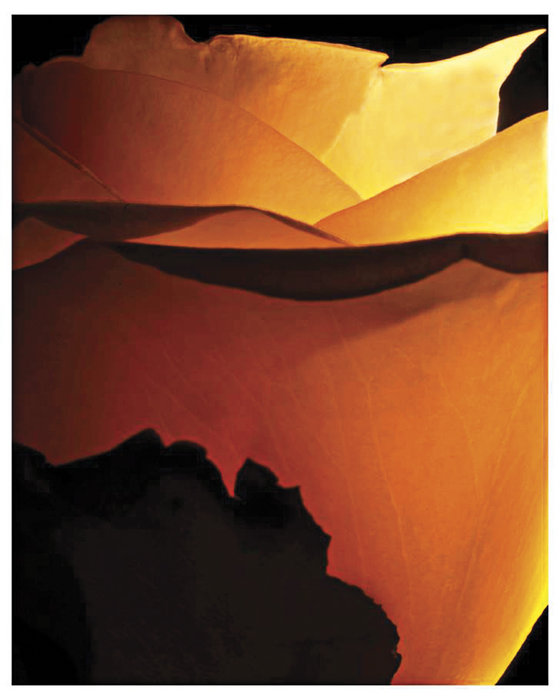Botanic photographer Jonathan Singer is exhibiting his work at Gallery 1200 in Hoboken through Aug. 11 in “Photo Nuage: The Chromogenic Series.”
The exhibit features larger-than-life photographs of flowers and plants. Singer captures the essence of the flower with incredible detail, from the pattern of veins running up the outside of a petal to its delicate curves and folds.
The close-ups of the petals signal movement with some encroaching on the page while others appear to dance. The sensual images reveal great subtlety and evoke lightness of being.
“These are abstractions of the flower where I am looking for the life force.”– Jonathan Singer
____________
The intimate images show great nuance of color. In “Queen of the Night,” Singer captures fine translucent, white petals suspended in midair while in “King of the Night” the yellow stamens explode from within as the petals stretch open.
Only one take
Singer describes his style as distinct, because he captures precision and perfection in only one take. In some of his photos the flowers appear suspended in motion, caught blossoming, the petals outstretched with delicate curved edges and a pronounced pistil. While the viewer may think that capturing a flower in its exact moment of beauty takes hours, Singer said it only takes him two minutes.
“The object is put in front of me. The camera is on a tripod within range,” said Singer.
“I move the lighting as fast as lightening, focus on the subject, [and] rotate the flower to where I feel I have captured its essence.”
Pursuing a passion
Singer has always had a passion for photography and flowers. He began exploring photography from the age of four with Polaroid cameras.
“I had to have every Polaroid camera that came out,” said Singer.
He was immediately drawn to flowers and could be found shooting tulips in his uncle’s garden in Jersey City around 1953.
“The palette of color was unlimited,” said Singer. He said that at the time his interest in photography began, black and white dominated the field. He sought for a way to duplicate the color in paintings by Dutch masters such as Rembrandt van Rijn. When he asked famed photographer Ansel Adams how to achieve that, he responded, “Your time isn’t now.”
Despite the discouragement, Singer immersed himself in his studies and pursued his passion, working alongside and learning from teachers like Russian American Neo-Plasticist painter Ilya Bolotowsky and contemporary Dutch Master Willem de Kooning at Southampton College in Long Island in the mid-sixties.
Even though Singer also had the opportunity to study with Ansel Adams, he chose instead to uncover his own technique and style.
In his time
“I knew what I wanted to do, but…I had to figure out a way to get to my time,” said Singer.
When digital cameras came along, Singer found his moment. He went to work with a Hasselblad, which is the same camera that was used during the first landing on the moon.
“A really good camera came my way,” said Singer. “I pushed it to its limits.”
Singer has received much recognition for his work as the Hasselblad Prize Laureate in 2008 and he also earned the Carl Linnaeus Silver Medalist in 2009 for merging art and science from the Swedish Royal Acedemy of Science. Eileen O. Ford from Ford Models called him a “Master of Light.”
He donated the first set of a monumental five-volume work to the Smithsonian Institution’s Department of Botany and the Smithsonian Institution Libraries. It is the only handmade double folio ever done in 200 years, according to Singer.
A Bayonne resident since 1981, Singer worked as a podiatrist until Parkinson’s disease prevented him from performing surgery five to six years ago.
“I’ve overcome the worst of the worst,” said Singer. He has had heart surgery and also battled leukemia, but despite his health challenges, he continues to work and fulfill his passion.
He flew last summer to Japan to shoot the Bonsai tree despite health risks, but it was a special project that he couldn’t resist. He is currently working on a book “Fine Bonsai: Art and Nature” that will be published by Abbeville Press in August. For more information on the book, visit: http://www.abbeville.com/bookpage.asp?isbn=9780789211125. Some of the Bonsai images can be viewed at the Hoboken exhibit.
Photo Nuage: The Chromogenic Series runs through Aug. 11 at the 1200 Gallery. For more information, visit: gallery1200.org.
Adriana Rambay Fernández may be reached at afernandez@hudsonreporter.com.
